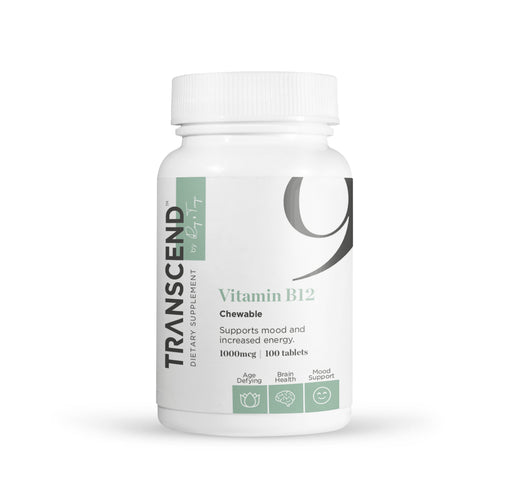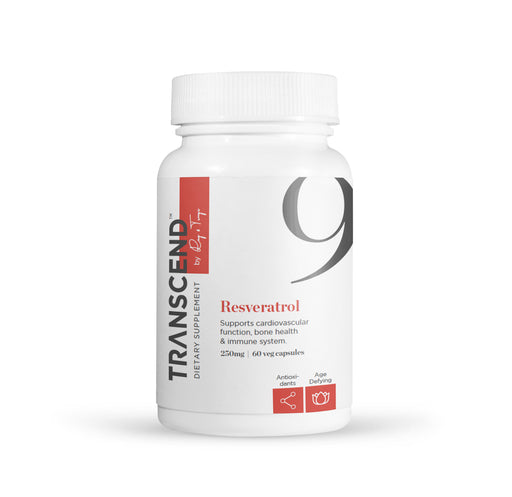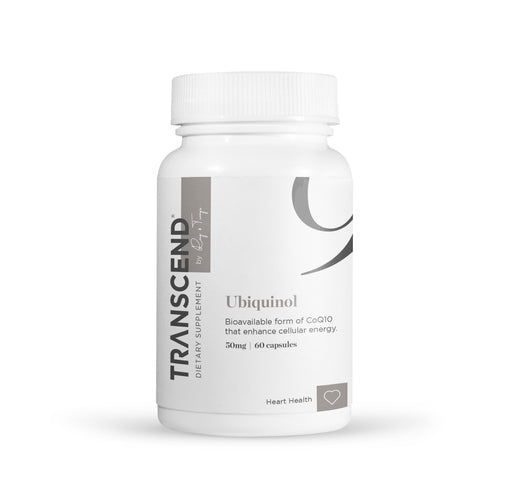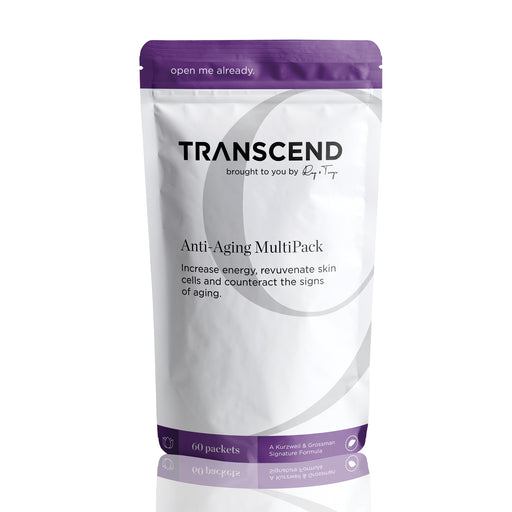
Vitamin B-12, Sublingual
Increased energy Improve mood Fight fatigue Common deficiency Better absorption Vitamin B12 (also called cobalamin) is one of eight water-solu...
View full details
The human body is designed for regular and vigorous physical activity. Although many people commit to daily exercise, there are just as many or more who may struggle to include it in their weekly schedule. With regular activity, you can experience increased longevity, improved mental health, and a decreased risk of age-related diseases like Alzheimer’s.
According to the U.S. Department of Health and Human Services, 74% of Americans over the age of 18 don’t exercise regularly and 40% don’t exercise at all. This growing number is a concern because it tends to lead to a higher risk of age-related diseases. As a result, the American College of Sports Medicine has joined the American Medical Association to promote the new initiative, “Exercise is Medicine.”
In TRANSCEND: Nine Steps to Living Well Forever, Ray Kurzweil and Dr. Terry Grossman state that just 3 hours of exercise every week can actually translate into the reversal of 10 years of aging.
Getting back into routine exercise can be difficult. To make this process easier, Ray and Terry have identified three types of exercise that are the most beneficial: aerobic exercise, strength training, and flexibility training.
Aerobic Exercise
When people hear “aerobic exercise,” many associate it with water aerobics or home fitness videos from the 1980s. Aerobic exercise is simply the name for exercise performed in the presence of adequate oxygen. This type of activity makes the heart and lungs work to increase the flow of oxygen within the body.
People who perform aerobic exercise experience increased endorphins, which can help overcome the natural tendency to avoid exercise. Aerobic exercise can also improve cardiovascular fitness and health.
Examples of Aerobic Exercises
Each of these recommended exercises are easy on the joints, which is ideal, especially as we age. The best way to begin is by starting slowly and gradually building up to a faster or more intense workout. If an intense workout isn’t right for you, interval training is an excellent way to improve cardiovascular health without overdoing it.
Strength Training
Many people, but especially women, have a tendency to shy away from strength training for fear of their bodies getting “bulky.” This is a common misconception, though. There are many benefits to strength training, including maintaining higher hormone levels, counteracting muscles’ natural tendency to shrink with age, and improving how you look, feel, and age.
People over 65 should practice strength training to maintain muscle mass, yet only 12% of this demographic does regular strength training. In fact, those between the ages of 20 to 80 can lose as much as 40% of their muscle mass if they avoid strength training.
What You Need
Strength training is great because the equipment is affordable, and the exercises can often be done from home. There's no need to buy a gym membership if you don't want to!
When using free weights or resistance bands, it’s important to keep your core engaged to avoid injury. Keep your shoulders down and relaxed, be mindful of your posture, and use slow, repetitive motions. Cycle through a set of movements, like bicep curls or squats, with a small weight while using slow and controlled movements to maintain a rhythm. Remember, a 5lb weight may not seem like a lot but the results can be incredible!
Flexibility Training
Unless you’re an avid yogi, the average American doesn’t do enough flexibility training. While it can seem like flexibility has purely superficial benefits, it can actually have a significant impact on our bodies. As we age, our muscle fibers and ligaments tend to get shorter with time, which adds stress to our joints and can even lead to arthritis. An easy solution to avoiding these ailments is regular stretching.
Examples of Flexibility Training
Reminder
Stretching is great… after you exercise. Muscles need a warm-up before they’re stretched, so don't bother pushing your body’s limits and risk pulling cold muscles. When we begin stretching after a long break, we think that our bodies will be as flexible as they once were. Be patient with your body and the results will follow.
Get Started!
Developing and committing to an exercise plan can be easier said than done. To help you get started on your road to living well forever, use TRANSCEND’s suggested fitness plan!
Keep in mind that this is your workout: you should have fun with it! Start off easy and rotate through areas of the body — your muscles need time to recuperate!
The first step is getting started. Once you develop a routine, you’ll be well on your way to living a longer and healthier life.

Increased energy Improve mood Fight fatigue Common deficiency Better absorption Vitamin B12 (also called cobalamin) is one of eight water-solu...
View full details
Combat internal aging Protect cells from radiation damage Increase antioxidant capacity Take with lecithin for better absorption Optimal dose for...
View full details
2022 update: Future batches of this product will use a Ubiquinol product that is a greenish capsule rather than a red softgel Bioavailable form o...
View full details
A Kurzweil + Grossman Formula Continued Synergy between Science and Convenience Convenient dosage packets Top anti-aging products Increase energy...
View full details
Leave a comment